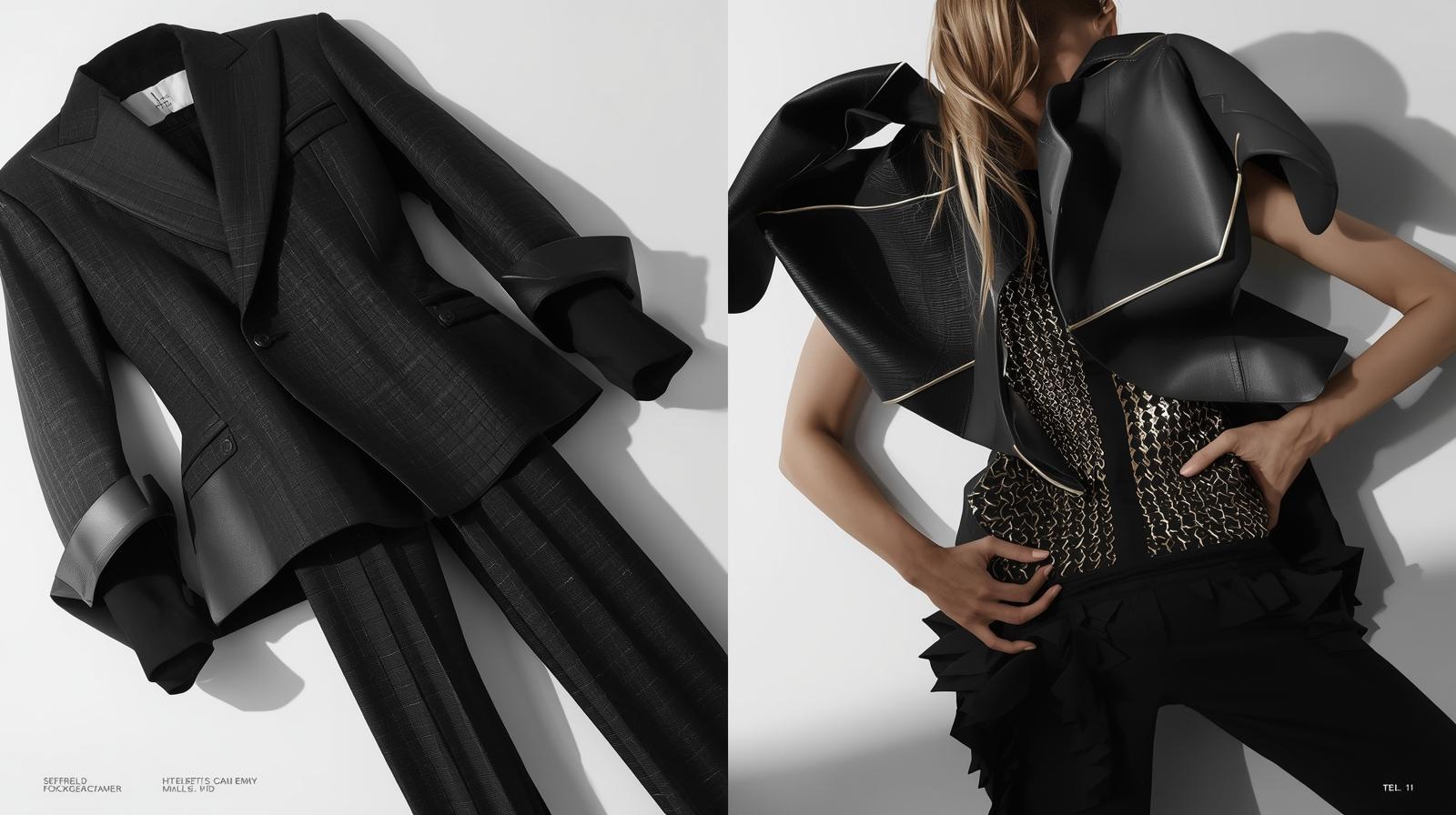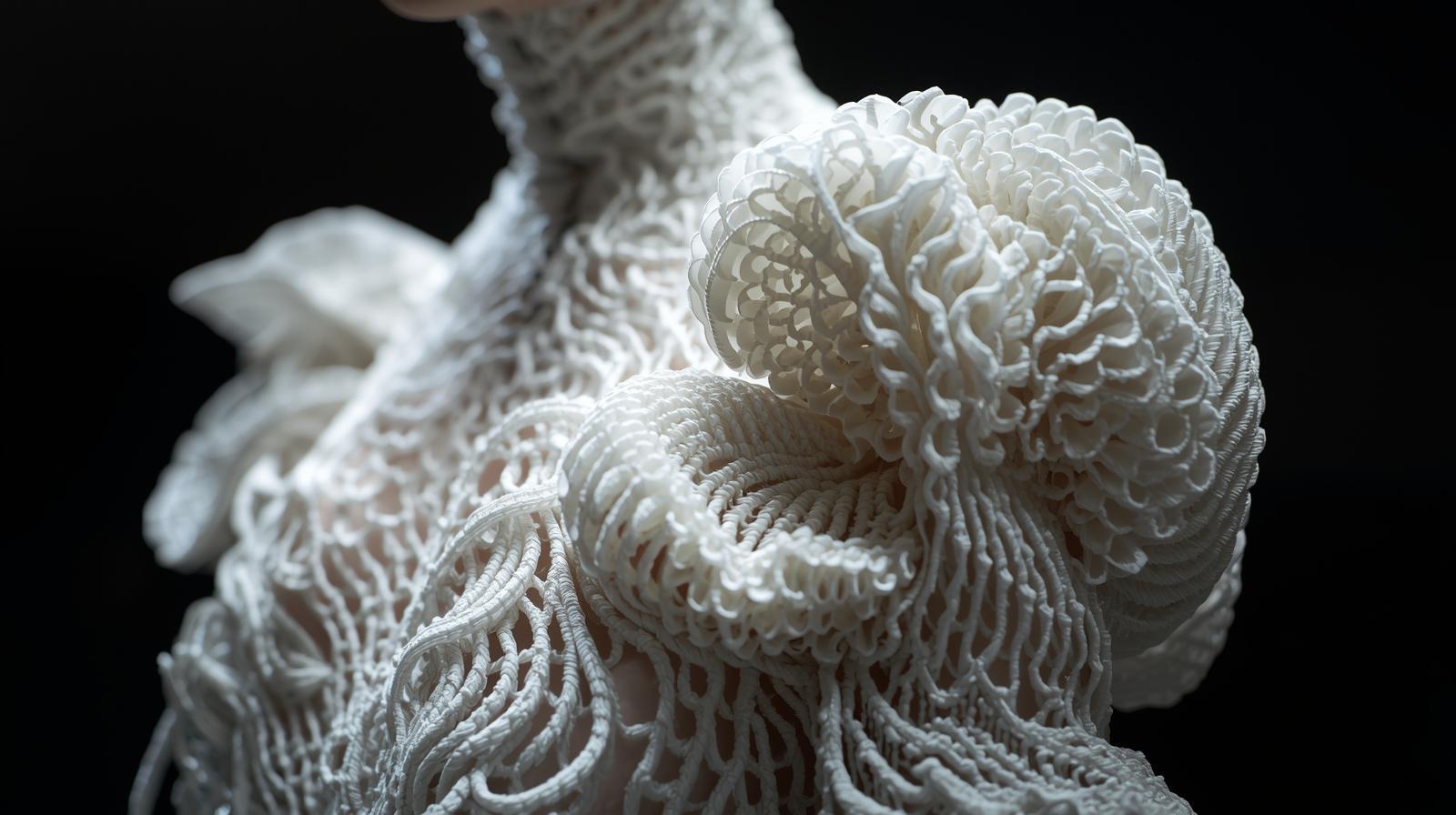31st Oct 2025
The Rise of 3D-Printed Couture - Fashion Meets Tech

With advancements in technology, you are witnessing the revolutionary emergence of 3D-printed couture in the fashion industry. This innovation allows designers to create stunning, bespoke garments that cater to your individual style while minimizing waste and environmental impact. As you explore this fascinating intersection of art and technology, you'll discover how customizable designs can redefine your wardrobe and challenge traditional manufacturing practices. Embrace the future of fashion where innovation meets your unique sense of aesthetics.
The Evolution of 3D Printing in Fashion
Historical Overview
The journey of 3D printing in fashion began in the late 20th century, primarily as a method for prototyping. Designers initially experimented with rapid prototyping technologies, such as Stereolithography (SLA) and Fused Deposition Modeling (FDM), which laid the groundwork for innovative designs. By the early 2000s, brands like *Iris van Herpen* and *Dita von Teese* pioneered the use of 3D printing for actual garments, showcasing the technology's potential in creating intricate, avant-garde pieces that challenged traditional couture norms.

Key Technological Advances
Over the years, significant technological advancements have propelled 3D printing in fashion. New materials like flexible filaments and bio-based resins have emerged, allowing for not just more complex designs but also wearability and comfort. You might find it interesting that breakthroughs such as multi-material printing enable seamless integration of different textures and properties into a single garment, enhancing functionality without compromising style.
The introduction of selective laser sintering (SLS) and digital light processing (DLP) has vastly improved the precision and quality of prints, producing garments that are not only visually striking but also structurally sound. Additionally, the integration of fashion-oriented software allows designers to create custom patterns and sizes tailored to individual measurements, fostering a new era of personalized fashion. You can observe how these technologies have shifted the fashion paradigm, making it possible for collections to go from digital concept to physical product in record time, thus changing how you approach design and retail.
3D-Printed Materials and Techniques
The integration of 3D-printed materials is transforming how fashion designers approach garment creation. These innovative resources allow you to experiment with forms and structures that traditional fabrics simply cannot achieve. With advanced polymers and bioplastics, you gain access to materials that are not only visually striking but also sustainable, promoting eco-friendliness in your designs.
Innovative Textiles
Innovative textiles are at the forefront of 3D-printing technology, offering unique properties and applications. For example, flexible filaments enable the creation of garments that can stretch and move with your body, while rigid structures can be designed for architectural statements in fashion. Such materials empower you to explore aesthetics that were previously unimaginable.
Printing Processes
Understanding the various printing processes is vital for leveraging 3D technology in fashion. Techniques like Fused Deposition Modeling (FDM) and Stereolithography (SLA) each have distinct advantages, allowing you to choose methods that align best with your design vision and materials. The fast-paced evolution of these processes constantly enhances both speed and quality in production.
Fused Deposition Modeling (FDM) involves layering melted thermoplastic material to create complex designs, making it ideal for intricate patterns and robust structures. You might prefer this method for achieving durability or layering colors seamlessly. On the other hand, Stereolithography (SLA) uses light to cure liquid resin, resulting in high-resolution pieces that boast a smooth finish. For specific applications, such as accessories or avant-garde clothing, SLA could provide the detail you need to set your designs apart. Choosing the right printing process can be the difference between a mediocre piece and a stunning masterpiece that captures your creative vision.

Designers Leading the Way
Visionary designers are redefining the fashion landscape with 3D printing, merging creativity with technical precision. High-profile figures like Iris van Herpen and Julien Macdonald utilize advanced technologies to craft intricate, one-of-a-kind pieces that push the boundaries of traditional design. This interplay of art and technology showcases how innovative thinking can elevate couture, inspiring others to explore the possibilities of 3D-printed fashion.
Notable 3D-Printed Collections
Collections like van Herpen's “Biopiracy” and E. Tautz's “Uncanny Valley” have gained acclaim for their stunning interplay of form and function. These collections highlight the seamless fusion of 3D printing with high fashion, marrying bold designs with sustainability. Notably, each piece showcases meticulous detailing, emphasizing the technology's ability to create complexities impossible in conventional garment construction.
Emerging Designers and Startups
Emerging designers and startups are vital to the evolution of 3D-printed couture, bringing fresh perspectives and innovative solutions to the fashion industry. Brands like Nervous System and Unmade are creating bespoke pieces that emphasize personalization and sustainability. These newcomers leverage advanced technology to produce garments that reduce waste and are tailored specifically to individual preferences.
With low overhead costs and reduced material waste, startups are uniquely positioned to challenge established brands. For example, Nervous System utilizes parametric design algorithms to generate patterns that respond to data, allowing customization that resonates with consumers. Additionally, platforms like Unmade enable customers to participate in the design process, ensuring that each garment is not just a product but a personal statement. This democratization of design signals a significant shift in how fashion is produced and consumed, paving the way for a more inclusive industry.
The Impact on Sustainability
The rise of 3D-printed couture significantly affects sustainability in the fashion industry, challenging traditional production methods that contribute to environmental degradation. As designers embrace this innovative technology, they are finding ways to minimize the industry's ecological footprint, ultimately paving the way for a more sustainable future.
Waste Reduction
Utilizing 3D printing allows you to produce garments on-demand, significantly reducing fabric waste. Unlike conventional cutting techniques, which often result in substantial off-cuts, 3D printing creates items layer by layer, using only the material necessary for the final product. This efficiency leads to less discarded material, contributing positively to waste management.
Resource Efficiency
Incorporating 3D printing into fashion design enhances resource efficiency by facilitating the use of innovative materials and reducing energy consumption in production. This technology allows you to customize designs and optimize the fit, which decreases the likelihood of returns and excess inventory. Moreover, it opens the door to biodegradable and recycled materials, further lessening environmental impact.
By focusing on resource efficiency, you can reduce the overall demand for raw materials. For instance, brands like Adidas have introduced 3D-printed shoes made from recycled ocean plastic, showcasing how integrating specialized materials not only conserves resources but also addresses pressing environmental issues. This forward-thinking approach allows you to align with sustainable practices while appealing to eco-conscious consumers. Additionally, 3D printing minimizes energy consumption during production, as the machines often require less power compared to traditional manufacturing processes. The combination of these advantages positions 3D-printed fashion as a game-changer in promoting sustainability.
Challenges in 3D-Printed Couture
The world of 3D-printed couture faces several challenges that hinder its widespread adoption in the fashion industry. From production obstacles to economic considerations, designers must navigate a complex landscape as they incorporate this innovative technology into their work.
Production Limitations
You may encounter various production limitations when working with 3D printing technology. The speed of printing can impact your ability to fulfill large orders, while the size of the printing bed may restrict the dimensions of your designs. Additionally, the material properties of 3D-printed fabrics may not yet match traditional textiles in terms of flexibility and comfort.
Cost Factors
The cost factors associated with 3D-printed couture can be significant, often making it less accessible for emerging designers. The initial investment in 3D printing technology and materials can be high, and while some startups see cost reductions over time, others struggle to balance quality with affordability. After you consider these financial elements, it's clear that pricing strategies will be important for sustainability.
- high initial investment
- material costs
- economies of scale
- After addressing these financial concerns, you recognize the need for strategic approaches to make 3D-printing financially viable.
The financial landscape surrounding 3D-printed couture is evolving, with designers seeking cost-effective solutions via partnerships or adopting hybrid methods that combine traditional techniques and 3D printing. Many brands are exploring 3D printing services that could lower overhead expenses, enabling them to experiment without incurring excessive costs. After implementing these strategies, you may find a competitive edge in an increasingly digital market.
- partnerships for cost efficiency
- hybrid production methods
- service-based 3D printing
- After leveraging these approaches, you can maximize your potential in the 3D-printed fashion space.
Consumer Acceptance and the Future of Fashion
Your acceptance of 3D-printed couture hinges on personal experience and exposure to these innovative designs. The more you see functional, stylish pieces integrated into everyday fashion, the more comfortable you will become with the technology. As designers continue to push the boundaries of 3D printing, you may find your preferences shifting toward unique, customizable options that reflect personal expression.
Changing Perceptions
As you witness successful collaborations between technology and fashion, your perception of 3D-printed garments may evolve. You might begin to appreciate the blend of artistry and engineering that goes into designing these pieces. This shift in mindset is important for the broader acceptance of 3D-printed couture, making it a viable option in your wardrobe.

Market Trends
Increasingly, brands are experimenting with 3D printing in response to consumer demand for innovation. You’ll notice that major fashion houses are investing in this technology, introducing limited-edition collections that feature 3D-printed elements. This trend reflects a growing consumer interest in tailored, sustainable fashion, as brands aim to meet your desire for unique and eco-friendly products.
The emergence of collaborations between tech companies and fashion brands highlights the trend of innovation at the intersection of these industries. For example, Nike's Flyknit technology has paved the way for fully 3D-printed sneaker designs that cater to both performance and personalized aesthetics. Similarly, companies like Unfold and Continuum have introduced 3D-printed fashion that pushes the boundaries of wearable art. With 3D printing estimated to grow into a $2.2 billion market by 2024 within fashion alone, you can expect to see more customized options, reduced waste, and an exciting redefinition of what modern couture looks like.
To wrap up
Conclusively, the rise of 3D-printed couture signifies a transformative intersection of fashion and technology that enhances your creative possibilities. As you embrace this innovative approach, you can expect personalized designs that reflect your individuality and values, while also supporting sustainability in the fashion industry. By integrating 3D printing into your wardrobe, you not only stay ahead of trends but also contribute to a forward-thinking, eco-conscious fashion landscape that prioritizes customization and efficiency.

